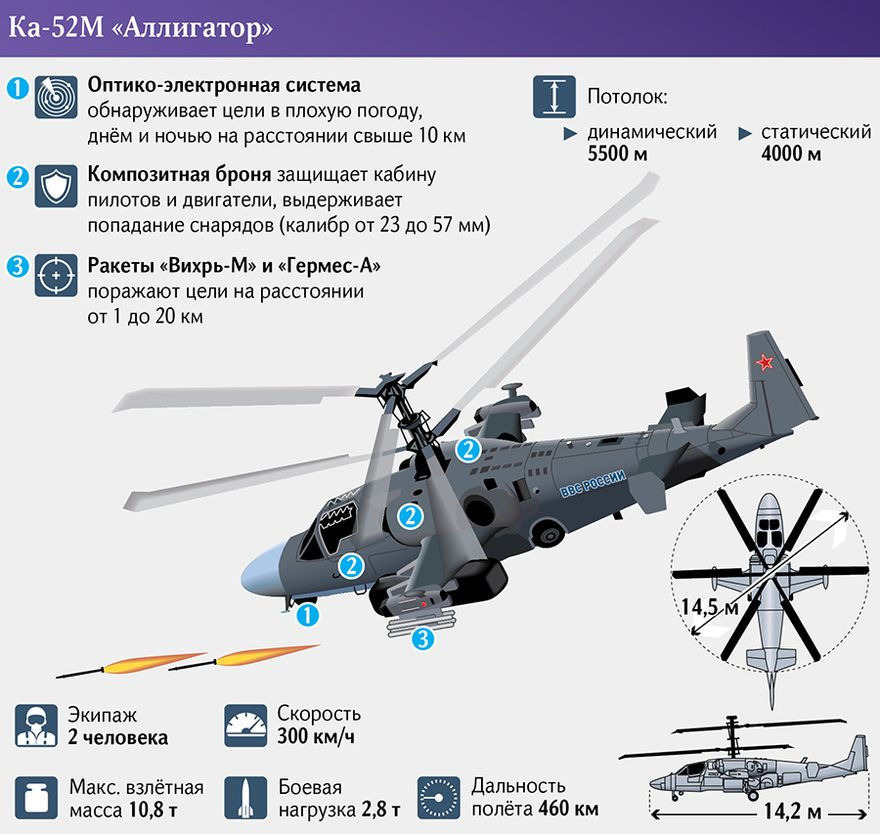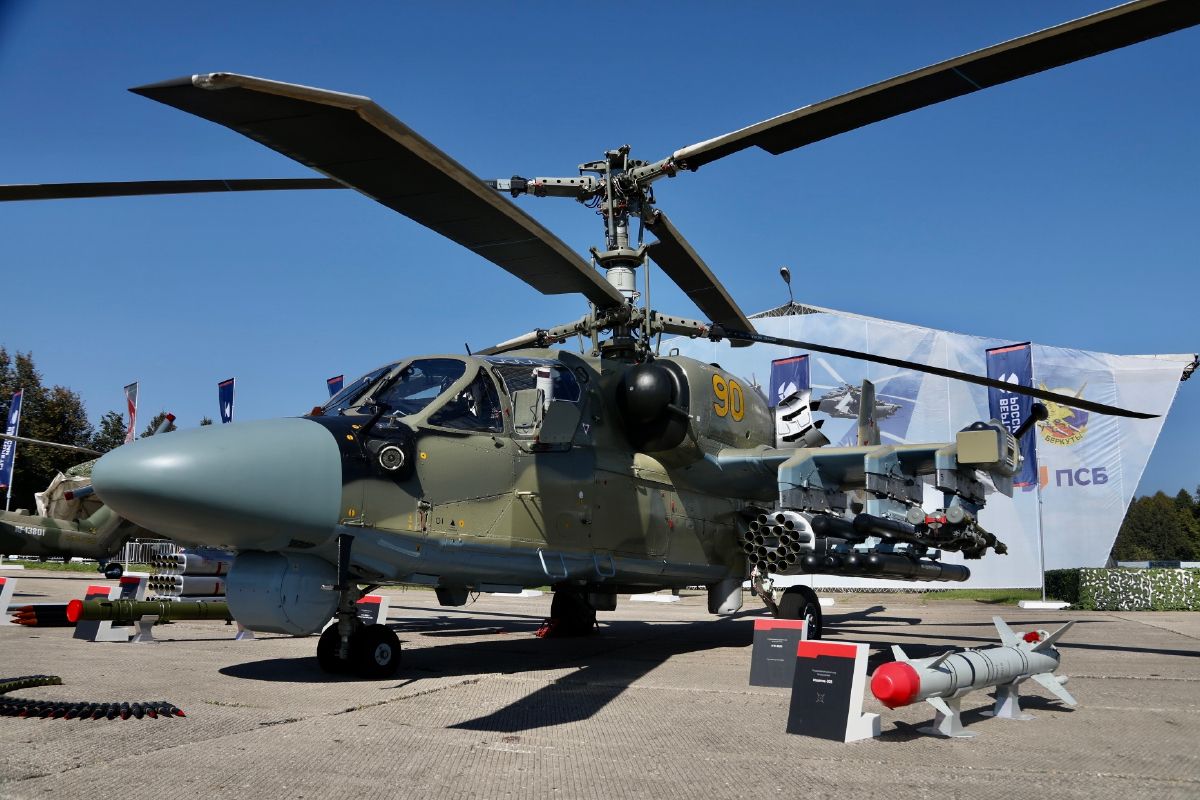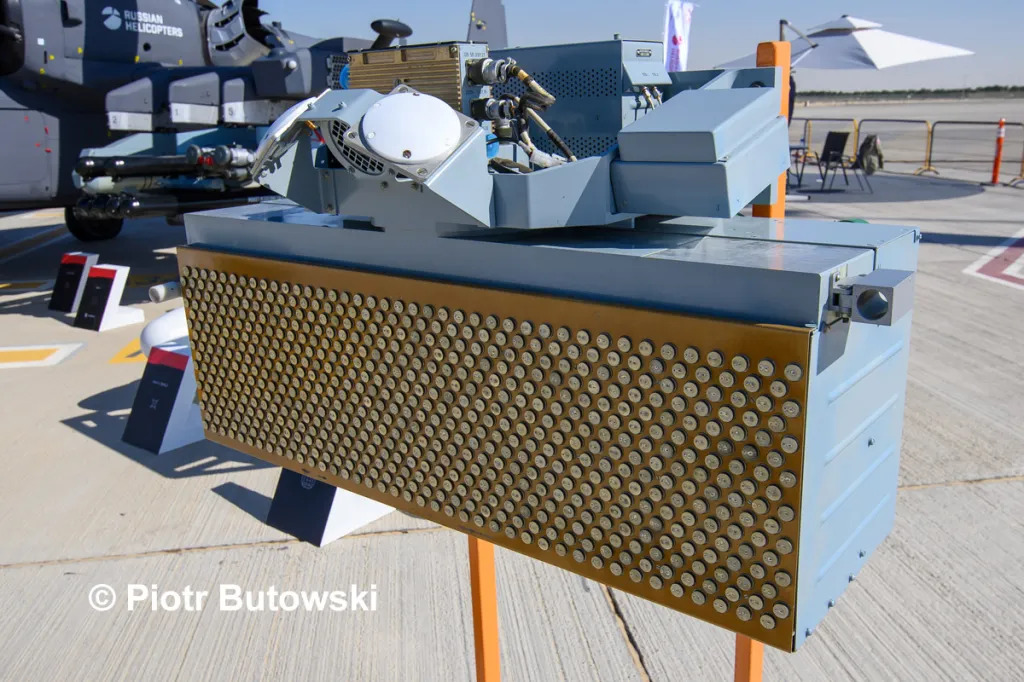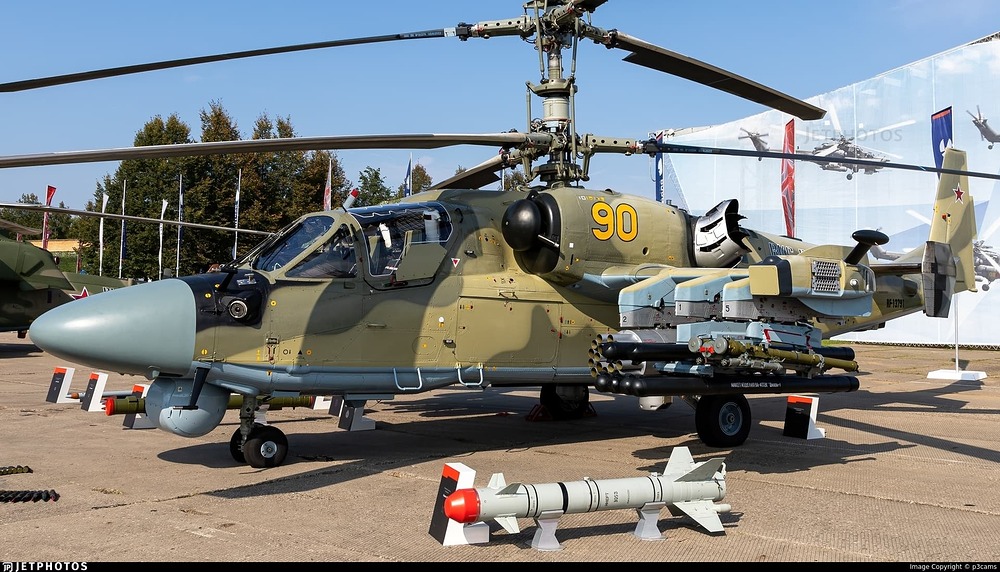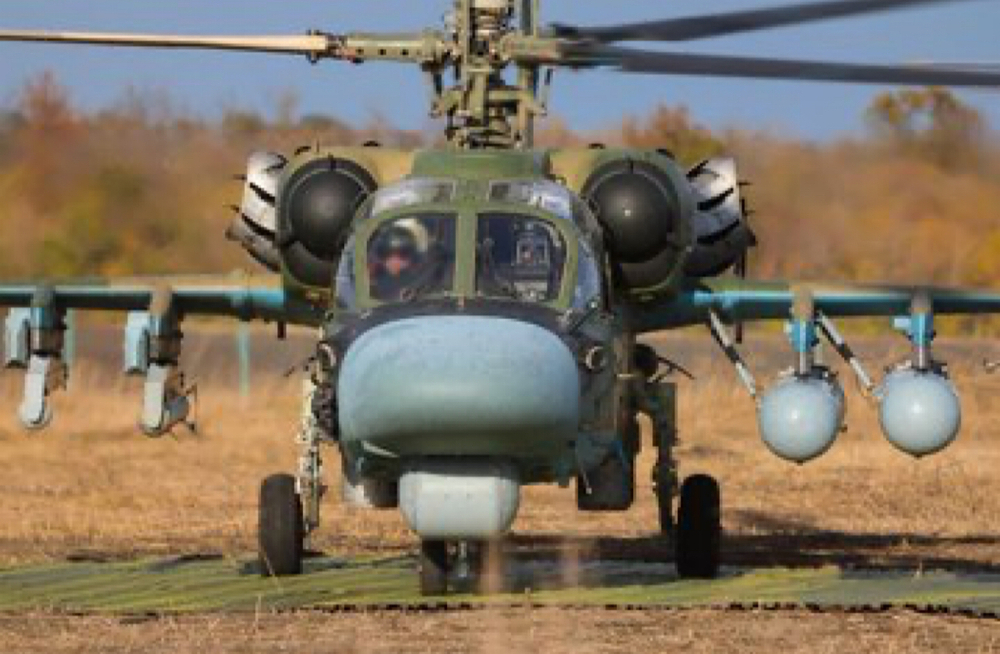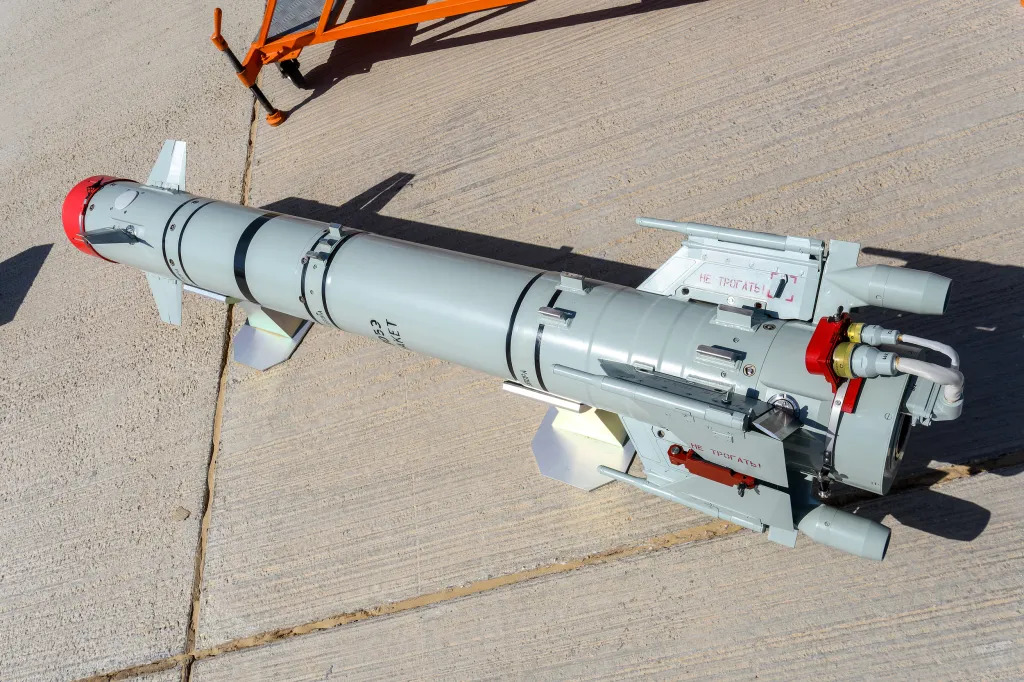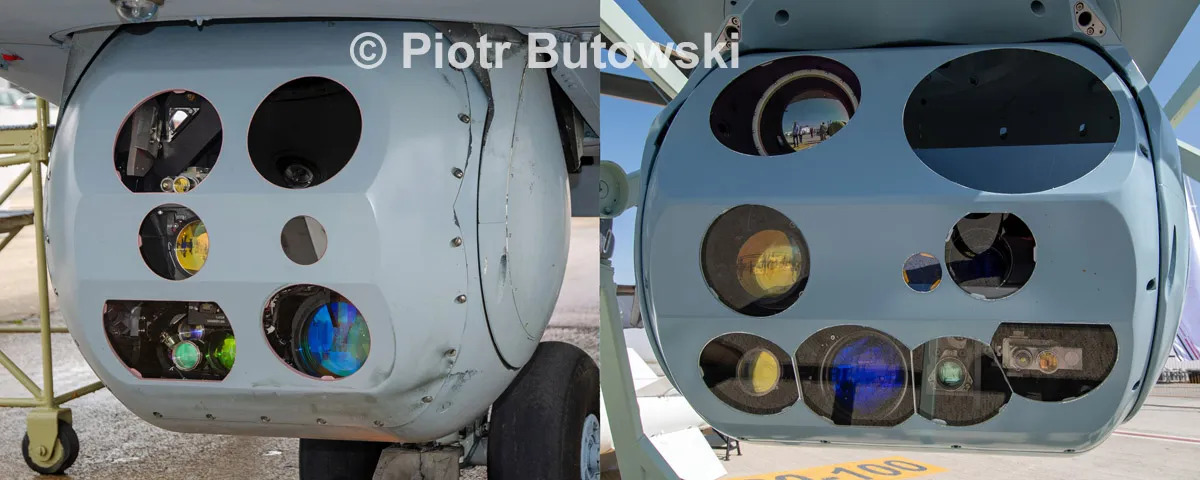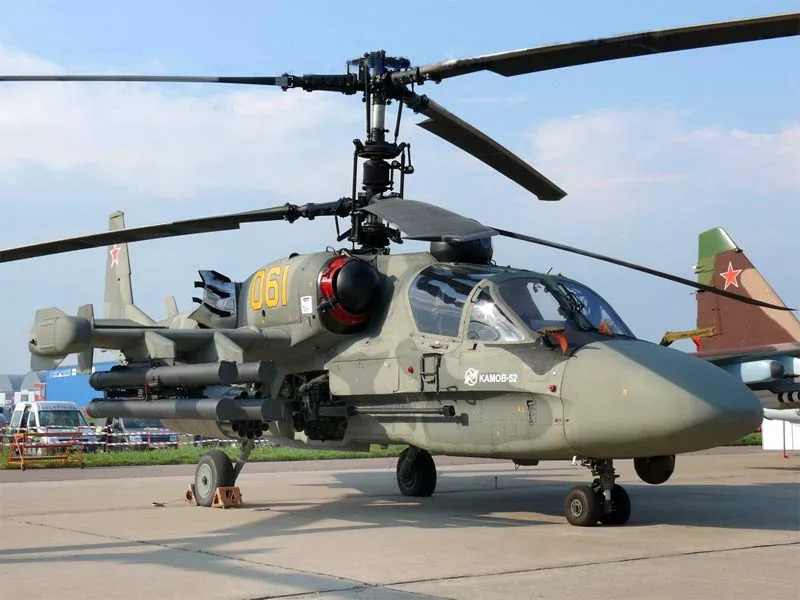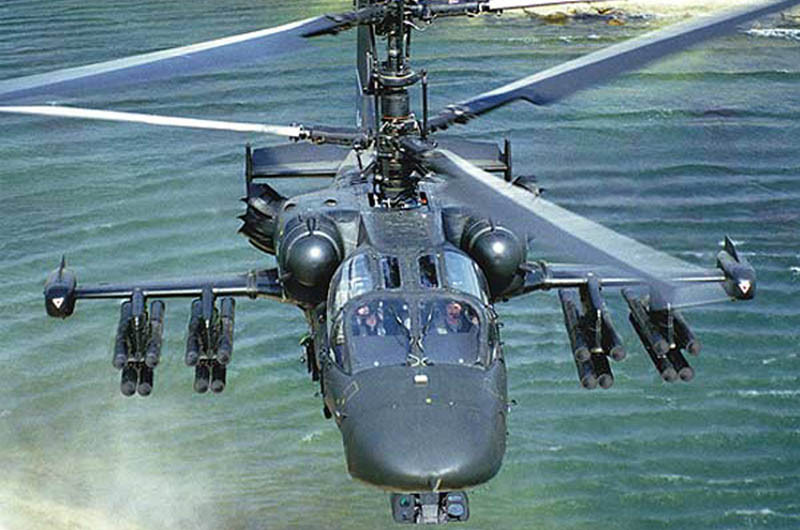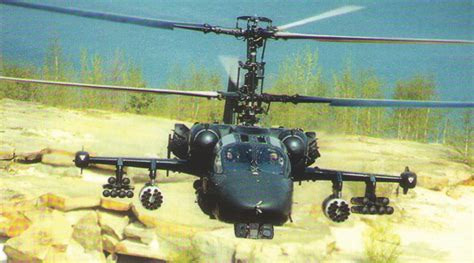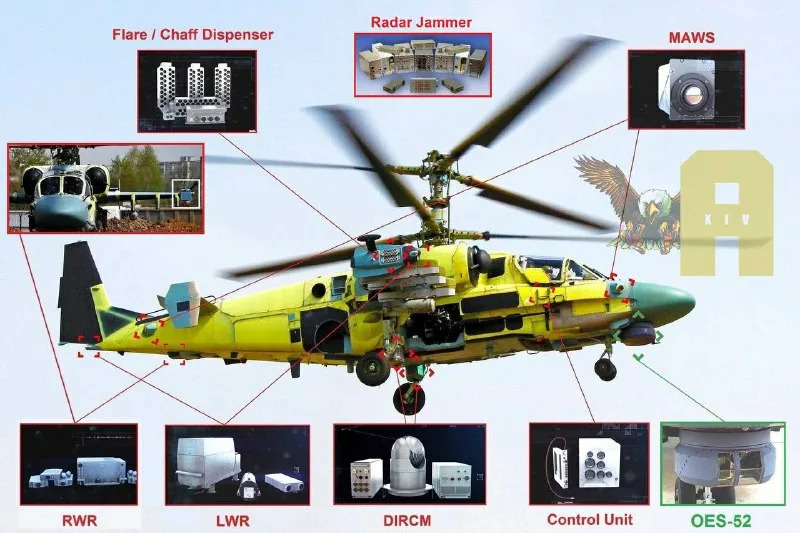- Yes
- No
![]() Ka-52M - The Super Alligator
Ka-52M - The Super Alligator
Welcome to my second rotor wing suggestion, today we are focusing on the Ka-52M, a upgraded variant of the Ka-52 with a AESA radar, LMUR capability etc. lets begin.
Introduction
The Ka-52M is the latest variant of Russia’s Ka-52 attack helicopter, It still has the powerful 30mm cannon and the unique coaxial rotor setup that made the original Ka-52 stand out, but almost everything else has been improved. The big difference is in the weapons: the Ka-52M can fire the new LMUR (Izdeliye-305) missile, which reaches much farther than the older Vikhr or Ataka, up to 15-25~km. Its sensors, night vision, and navigation gear have also been upgraded, making it more effective in bad weather and at night. On top of that, the Ka-52M has better protection and electronic countermeasures, giving it a better chance of surviving against modern air defenses. Overall, it’s a tougher, more versatile version of the original Alligator.
History
The Ka-52 “Alligator” has its roots in the late Cold War, when the Soviet Union was looking to expand the Kamov design bureau’s successful helicopter line. It evolved directly from the single-seat Ka-50 which first flew in 1982. The Ka-50 “Black Shark” was unusual, featuring a coaxial rotor system, heavy armor, and a focus on high agility, but its single-pilot setup limited its usefulness in complex missions. By the 1990s, Kamov began work on a two-seat derivative, which would eventually become the Ka-52.
The Ka-52 first flew in 1997, though Russia’s economic troubles delayed its development and production for years. Designed as both a command and attack helicopter, it kept the same coaxial rotor layout and 30 mm 2A42 cannon as the Ka-50 but added a second seat for a weapons officer and greatly improved avionics. This made it more practical for reconnaissance, battlefield coordination, and precision strikes. By the late 2000s, the Russian military adopted the Ka-52, and full production ramped up in the 2010s.
The Ka-52 has since seen combat experience in Syria and Ukraine, where it has been used heavily for close air support, anti-armor missions, and as a battlefield surveillance platform. Its mix of mobility, heavy armament, and advanced optics made it one of Russia’s most capable attack helicopters.
Development continued into new variants. The Ka-52K “Katran” was built for naval operations, with folding rotors and compatibility with heavier weapons like the Kh-38 missile. More recently, the Ka-52M modernization program introduced upgraded avionics, better night-fighting capability, and the ability to fire the long-range LMUR (Izdeliye-305) missile, pushing the helicopter’s strike reach far beyond earlier versions.
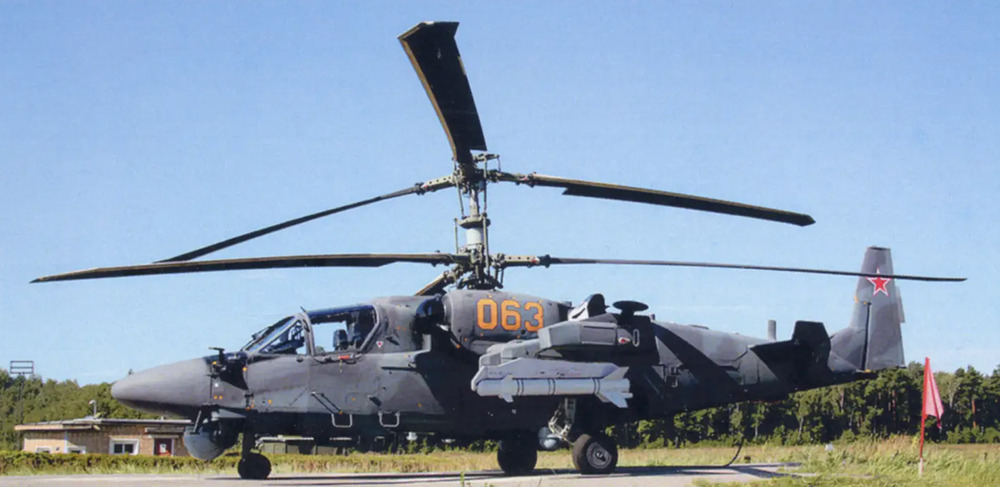
Specifications
- Crew: 2 (side-by-side configuration)
- Length: 14.2–16.0m
- Rotor diameter: 14.5m
- Height: 4.9m
- Maximum takeoff weight: 12,250 kg
- Powerplant: x2 Klimov VK-2500 turboshaft engines, each producing approximately 2,400-2,500 horsepower
- Speed: 300km/h
- Range: combat radius 460 km; ferry range often cited 1,100 km
- Service ceiling: 5,500m
- Climb Rate: 16m/s
Armament
- Cannon:
-
- 30 ×165 mm 2A42 autocannon (460 rounds)
-
- x4 23mm Gash-23L cannon pods (1000 rounds)
- Air to ground missiles:
-
- x4-8 LMUR (Izdeliye-305 / Kh-39) 14.5km range
-
- x4-8 LMUR-ER (Izdeliye-305 (ER) / Kh-39) 25.3~km
-
- x12 9K127 Vikhr
-
- x12 9M120 Ataka
-
- x-2-4 Kh-38MLE (technically possible)
- Unguided Rockets
-
- S-13
-
- S-8
- Air to air missiles
-
- x8 9K338 Igla-S
-
- x8 9K333 Verba
-
- x2~ R-74M
- Bombs
-
- x4 FAB-100
-
- x4 FAB-250
Avionics & Systems
RZ-001 Cutter AESA Radar: Claims large detection ranges (tank groups, ships, airborne targets) and modes for air-to-air and ground search. This radar is the main element that gives the Ka-52M beyond-visual detection.
Upgraded OES-52: a modern multi-sensor electro-optical turret with thermal imager, TV camera, laser rangefinder/designator and laser spot tracker lighter and more capable than older GOES-451-type systems. This is the sensor package crews use for target ID and terminal guidance.
Upgraded fire control: new fire-control computers and two-way datalinks to employ and guide new munitions such as the LMUR (Izdeliye-305). That lets the helicopter pass targeting data, receive sensor updates, and steer weapons at range.
L418 Monobloc self-defense suite:
-
- L418-2 Ultraviolet Missile Approach Warning Sensors: These sensors provide early warning of incoming missiles by detecting their ultraviolet signatures, allowing the helicopter to react promptly.
-
- L418-5 Directional Infrared Countermeasure (DIRCM) System: This system employs a modulated infrared and ultraviolet radiation lamp (SP3-1500) to jam the guidance systems of incoming missiles, effectively neutralizing threats before they can reach the aircraft.
-
- Integrated Electronic Warfare Systems: The L418 Monobloc suite includes radar and laser warning receivers, along with chaff and flare dispensers, to provide comprehensive protection against a wide range of threats.
The V006 or RZ-001 Rezets (cutter) radar with active electronic scanning antenna
Photos
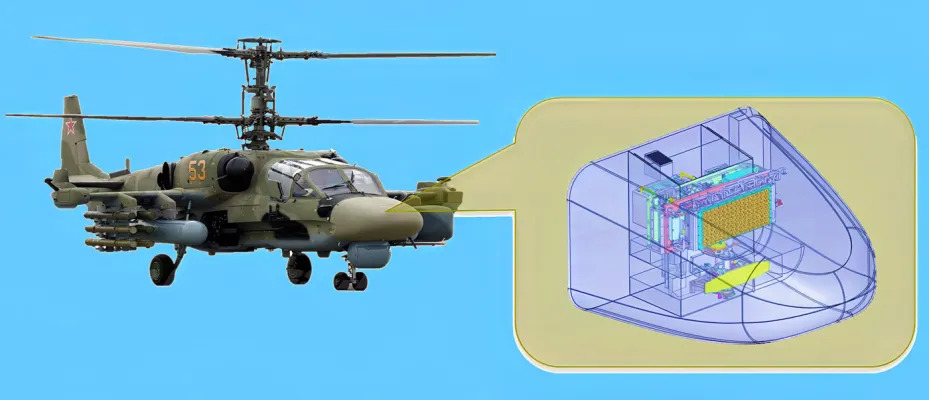
The standard GOES-451 (left) and modernized GOES-451M electro-optical targeting turrets. Piotr Butowski
